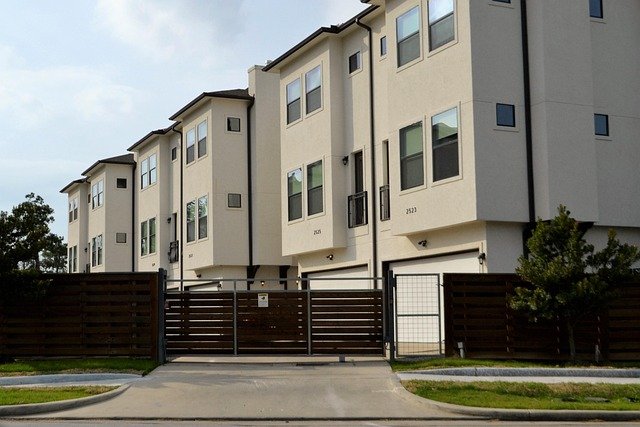Exploring Senior Living Options: Apartments and Independent Living
Transitioning to senior living is a significant life decision that offers comfort, community, and care tailored to older adults. With various options available from independent living apartments to newly constructed senior communities, finding the right living arrangement means balancing personal preferences, healthcare needs, and lifestyle desires. Understanding the different types of senior housing can help make this important transition smoother and more rewarding.

As we age, our housing needs naturally evolve. Many seniors find themselves seeking living arrangements that offer greater convenience, accessibility, and community while maintaining independence. Senior living options have expanded dramatically in recent years, providing diverse choices that cater to different preferences, health requirements, and lifestyle desires. From newly built apartments designed specifically for seniors to vibrant independent living communities, today’s options are far more varied and sophisticated than the retirement homes of previous generations.
What Are Senior Living Apartments?
Senior living apartments are residential units specifically designed for older adults, typically those aged 55 and above. These apartments feature age-friendly designs including wider doorways, accessible bathrooms, emergency call systems, and single-level layouts that eliminate the need for stairs. Unlike traditional apartments, senior living complexes often include services such as maintenance, landscaping, and sometimes housekeeping or transportation assistance.
These communities frequently offer amenities tailored to older adults, such as fitness centers with senior-appropriate equipment, organized social activities, and common areas designed to foster community interaction. Many senior apartments operate on a rental basis, allowing residents to avoid the responsibilities of homeownership while enjoying a maintenance-free lifestyle in an environment surrounded by peers in similar life stages.
Why Consider New Homes For Seniors?
Newly constructed senior housing offers significant advantages over older properties. Modern senior homes incorporate the latest in universal design principles, making them inherently more accessible and safer for aging residents. These new developments typically feature improved energy efficiency, which can significantly reduce utility costs—an important consideration for seniors on fixed incomes.
New senior communities are also built with contemporary preferences in mind. They often include desirable amenities like walking paths, community gardens, and technology centers. Additionally, new construction means fewer maintenance concerns in the early years of residency, providing peace of mind to seniors who want to avoid unexpected repair costs or disruptions. Many new senior developments are also strategically located near medical facilities, shopping centers, and cultural attractions, offering convenience that enhances quality of life.
How Do Independent Living Apartments Differ?
Independent living apartments represent a specific category within senior housing focused on active, self-sufficient older adults. These communities are designed for seniors who can live autonomously but desire the convenience and social benefits of a community setting. Unlike assisted living facilities, independent living doesn’t typically include personal care services or medical assistance as part of the standard package.
Residents of independent living apartments maintain their own schedules and lifestyles while benefiting from amenities like dining services, housekeeping, transportation, and robust activity calendars. Many communities offer a campus-like setting with various housing options ranging from apartments to cottages or small homes. The emphasis is on providing an engaging, low-maintenance lifestyle that supports active aging and social connection, often with the security of knowing additional care options may be available if needs change in the future.
Finding New Senior Living Apartments Nearby
Locating newly built senior apartments in your area requires a strategic approach. Start by researching online using senior housing directories and real estate websites that specialize in age-restricted communities. Local senior centers and Area Agencies on Aging can also provide valuable information about new developments in your region.
Consider working with a real estate agent who specializes in senior housing, as they’ll have insights about upcoming projects and communities that might not be widely advertised. Attending senior housing expos or open houses can provide firsthand experience of available options. When evaluating potential communities, consider factors beyond just the apartment itself—assess the neighborhood’s walkability, proximity to healthcare facilities, and accessibility to family members who may provide support.
What Amenities Should You Look For?
When evaluating senior living options, certain amenities can significantly enhance quality of life and provide long-term satisfaction. Security features should be a priority—look for communities with controlled access, emergency response systems, and well-lit common areas. Wellness-focused amenities like fitness centers, swimming pools, and walking trails support physical health, while multipurpose rooms, game areas, and arts spaces nurture social and mental well-being.
Transportation services are particularly valuable for seniors who no longer drive, providing independence for shopping, medical appointments, and social outings. Consider communities that offer flexible dining options, from full-service restaurants to casual cafés or private dining rooms for family gatherings. Technology infrastructure is increasingly important as well—reliable internet access, computer centers, and smart home features can help seniors stay connected and independent.
Understanding Costs and Financing Options
Senior living apartments vary widely in cost depending on location, amenities, and services offered. Independent living communities typically range from $1,500 to $4,000 monthly, while newer developments with premium amenities may command higher rates. These costs usually cover rent, utilities, maintenance, and access to community amenities, though meal plans may be separate.
| Housing Type | Average Monthly Cost | What’s Typically Included | Additional Costs |
|---|---|---|---|
| Standard Senior Apartment | $1,500-$2,500 | Rent, maintenance, basic utilities | Meals, transportation, activities |
| New Construction Senior Housing | $2,500-$4,000 | Rent, maintenance, utilities, some amenities | Premium services, meal plans |
| Luxury Independent Living | $3,500-$6,000+ | All-inclusive packages with dining, housekeeping | Personal care services if needed |
Prices, rates, or cost estimates mentioned in this article are based on the latest available information but may change over time. Independent research is advised before making financial decisions.
Financing options include personal savings, Social Security benefits, pension income, and long-term care insurance. Some seniors sell their homes to fund their move to senior living, while others explore reverse mortgages or life insurance conversions. Veterans may qualify for the Aid and Attendance benefit to help cover costs. It’s advisable to consult with a financial advisor who specializes in retirement planning to create a sustainable strategy for covering senior living expenses.
As you consider the transition to senior living, remember that the right choice balances immediate needs with potential future requirements. Many seniors find that the investment in appropriate housing yields significant returns in quality of life, safety, and social connection. By thoroughly researching options and understanding the full cost picture, you can make an informed decision that supports a fulfilling and comfortable lifestyle in your senior years.




